Jagged rose-colored granite mountains, ancient seaside fortresses, bustling goat markets, camel races, local bullfights, and 2,000 miles of untouched coastline and wild beaches. Oman is truly one of the last places on the planet that awakens the traveler’s deepest desire to explore and wander, to search for adventure and get lost.
The Sultanate of Oman has one of the region’s best preserved cultures and retains an air of authenticity everywhere you go. In my guide, I’ve included the top 15 things to do along with practical tips for traveling to Oman, the otherworldly corner of Arabia.
Oman Traveler Essentials
- Region: Middle East; Arabian Peninsula
- Capital: Muscat
- Language: Arabic, English widely spoken
- Currency: Omani Rial (OMR)
- Emergency Contact Information: 9999
- Best time to visit: October-April
- Majority Religion: Ibadi Islam
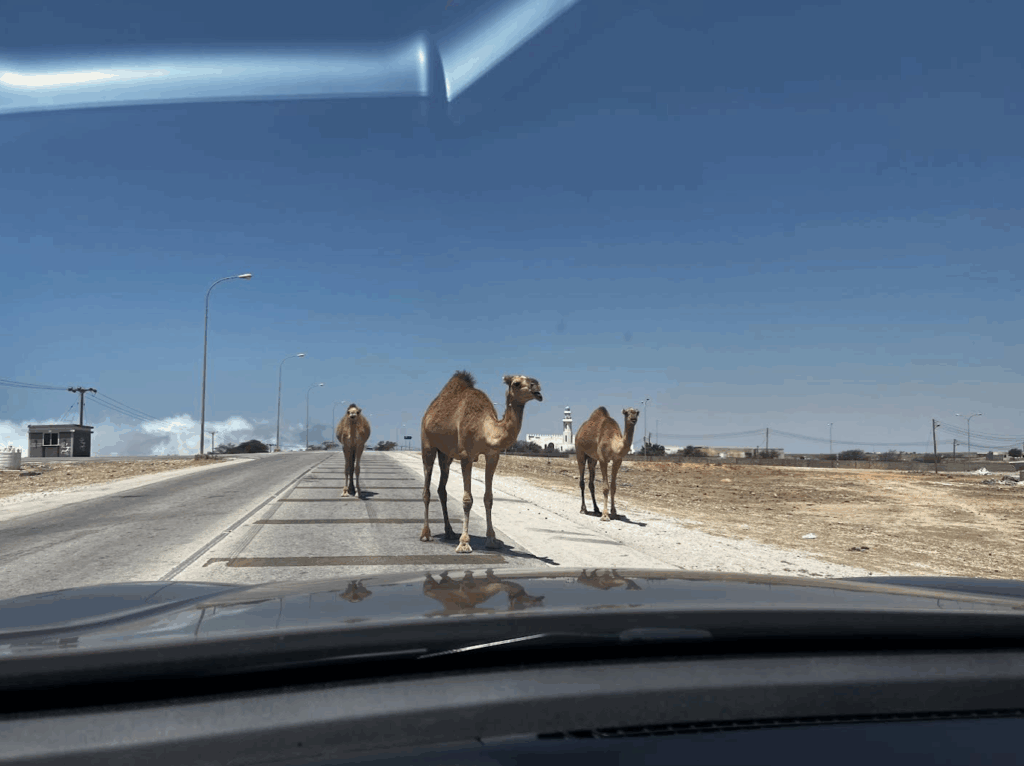
Visas to Oman
Many nationalities are issued visas on arrival in Oman. There are several visa options based on how long you plan to stay:
- 14- day visa: Free of charge
- 30-day visa: 20 Omani Rials (~52 USD)
- 1- year visa (multiple entry): 50 Omani Rials (~130 USD)
Countries eligible for Visa on Arrival:
European Union, Andorra, Argentina, Australia, Bolivia, Brazil, Brunei, Canada, Chile, Colombia, Ecuador, Hong Kong, Iceland, Indonesia, Japan, Lebanon, Liechtenstein, Macau, Macedonia, Malaysia, Moldova, Monaco, New Zealand, Norway, Paraguay, San Marino, Seychelles, Singapore, South Africa, South Korea, Suriname, Taiwan, Thailand, Turkey, United States, Uruguay, Vatican City and Venezuela.
Best Time to Visit Oman
The best time to visit Oman is October through April. Fall through early Spring boasts the best weather in Oman and is also when many traditional and social events occur.
Summertime in Oman is brutal. The heat swelters in the inland and desert, while the coastal cities face extreme levels of humidity.
// Note: the Khareef (or monsoon) season in Salalah lasts from late June to early September and is one of the best times to visit the Dhofar region in the South of Oman. A cool mist blankets the coast in clouds and the arid mountains turn green. However, it’s also one of the busier times to travel to Salalah.
// Check out my full 8-day itinerary for help planning your trip to Oman (COMING SOON).
Top 15 Things to do in Oman
1. Explore the Dhofar Region of Oman
It’s remarkable how few tourists travel to the Dhofar region when visiting Oman. Just an hour’s flight from Muscat, Salalah and the Dhofar region might as well be a different world.
Dhofar is a dreamlike, tropical oasis. Deeply soulful, it’s the remote corner of Arabia and feels like the edge of the Middle East. It contains miles of unspoiled and rugged coastline with wild beaches where thousands of camels, donkeys, and cows roam freely. It also has rolling hills with unique species of plants and trees only found in the Dhofar region.
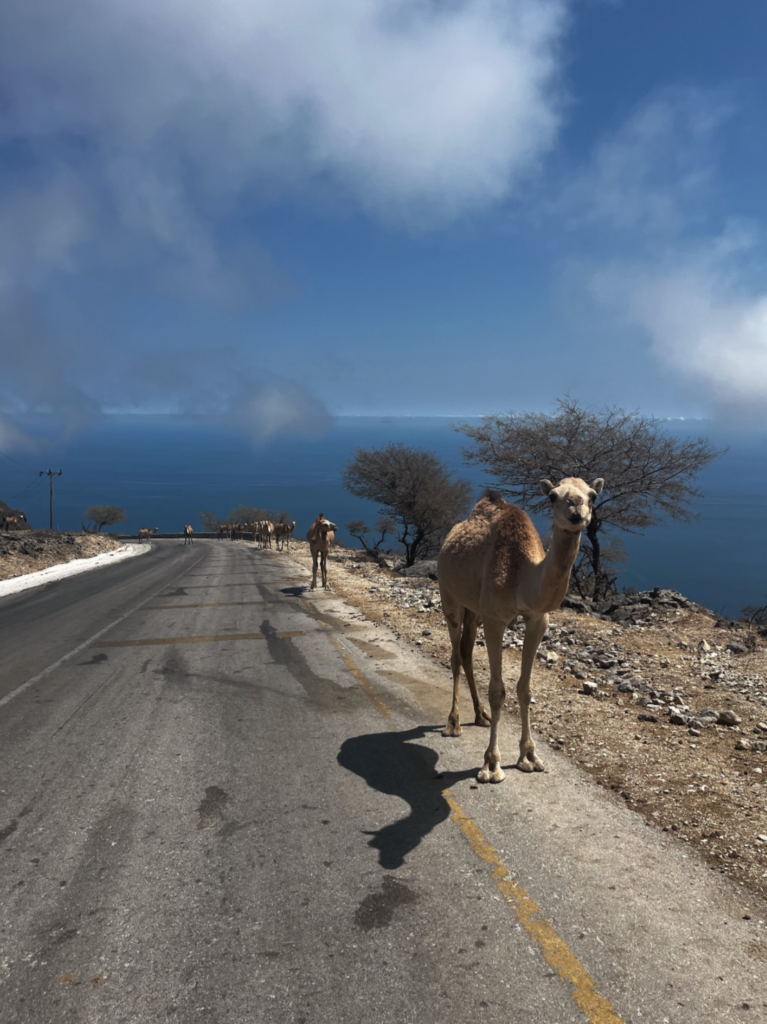
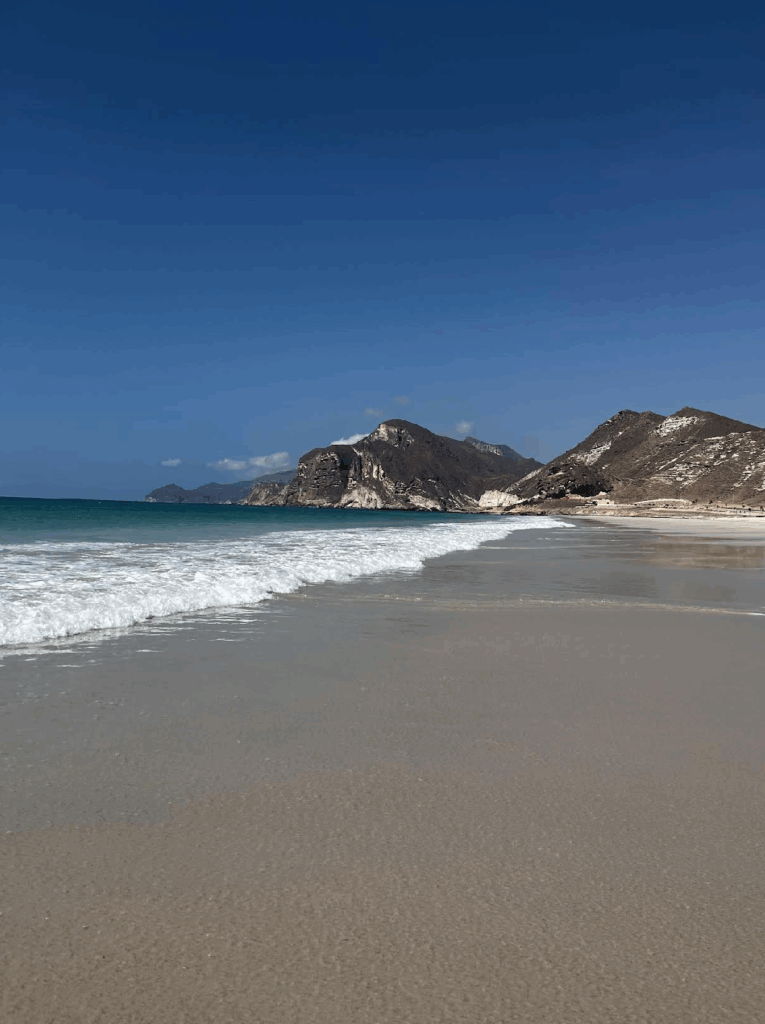
2. Discover Salalah and Drive on the Beach
Salalah is super tropical. It’s astonishing that such a place can exist in the Middle East. On a map, Salalah is on the same tropical plane as parts of Thailand and Vietnam.
Salalah’s dense tropical forests make it the perfect place to harvest bananas, mangos, and papayas. Dirt roads wind through massive plantations that are concealed in an endless wall of palm trees and birds of paradise. Along Sultan Qaboos Street, makeshift stalls sell fresh and affordable fruit and juices.
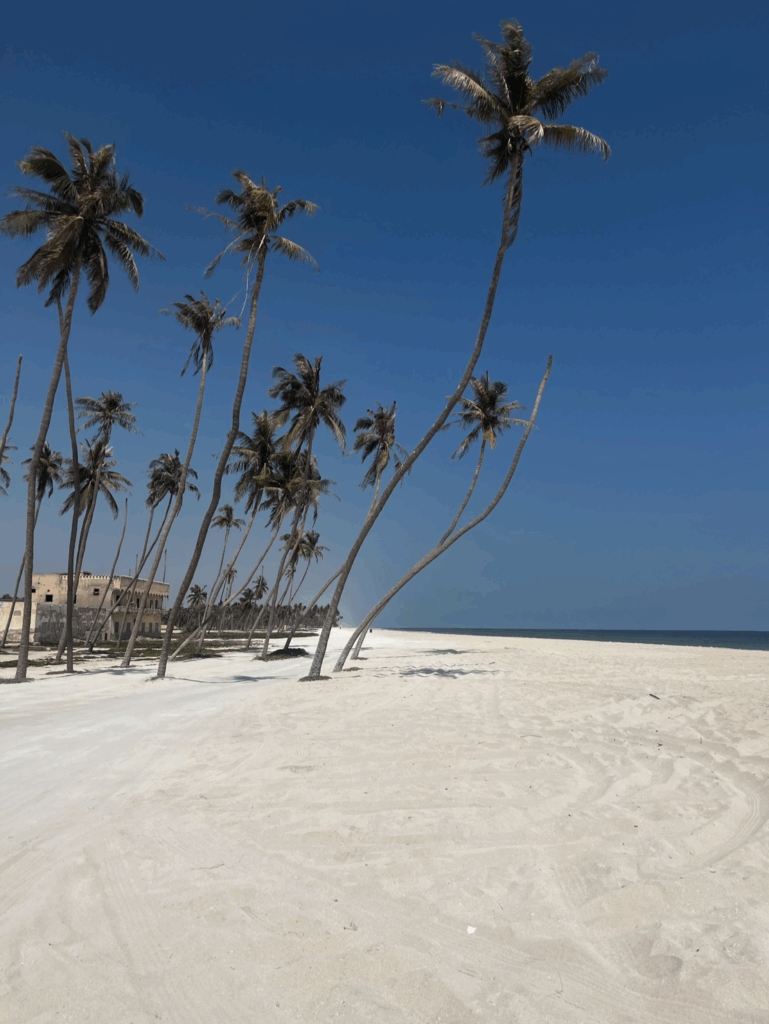
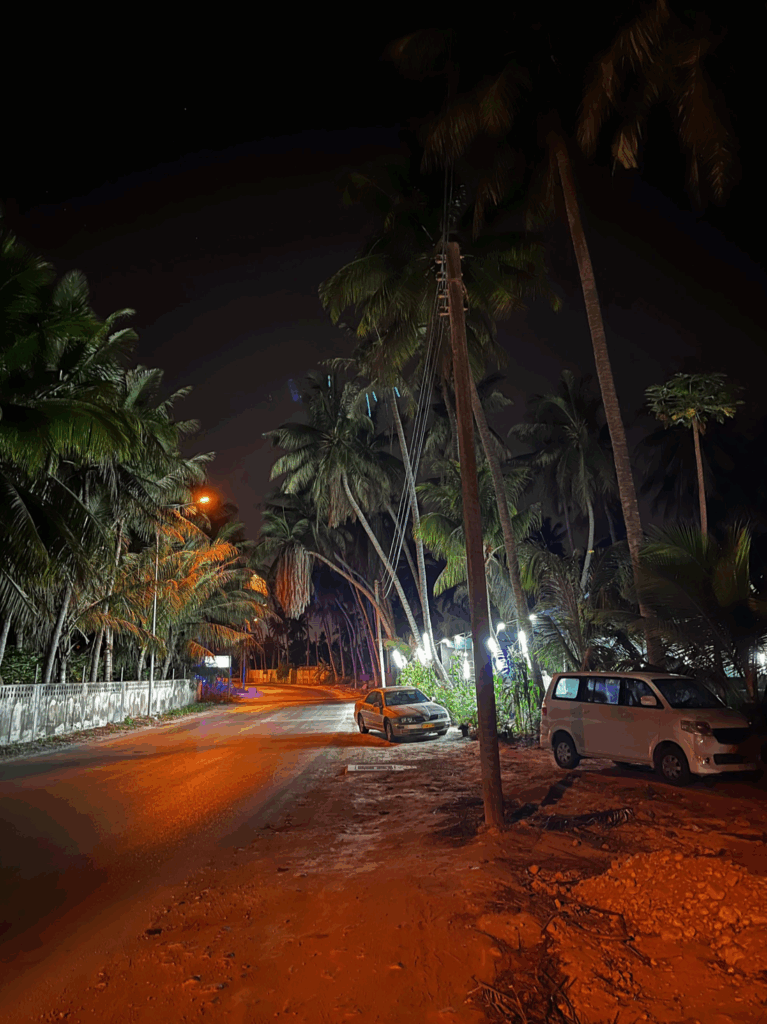
A stone’s throw away from the tropical forests and plantations is the white-sand shoreline of Salalah. Incredibly, cars are allowed to drive on the beach!
Salalah’s beaches had some of the warmest waters I’ve ever swam in. I had the entire beach all to myself with not another soul in sight. After swimming in the Omani sea, I opened the trunk of my car and watched the waves under a canopy of palm trees. It felt like I was on a beach in Hawaii rather than the tip of the Arabian Peninsula.
// Check out my comprehensive travel guide to Salalah and the Dhofar region for everything you need to know about exploring the South of Oman (COMING SOON).
3. Take the Scenic Drive To the Yemen Border
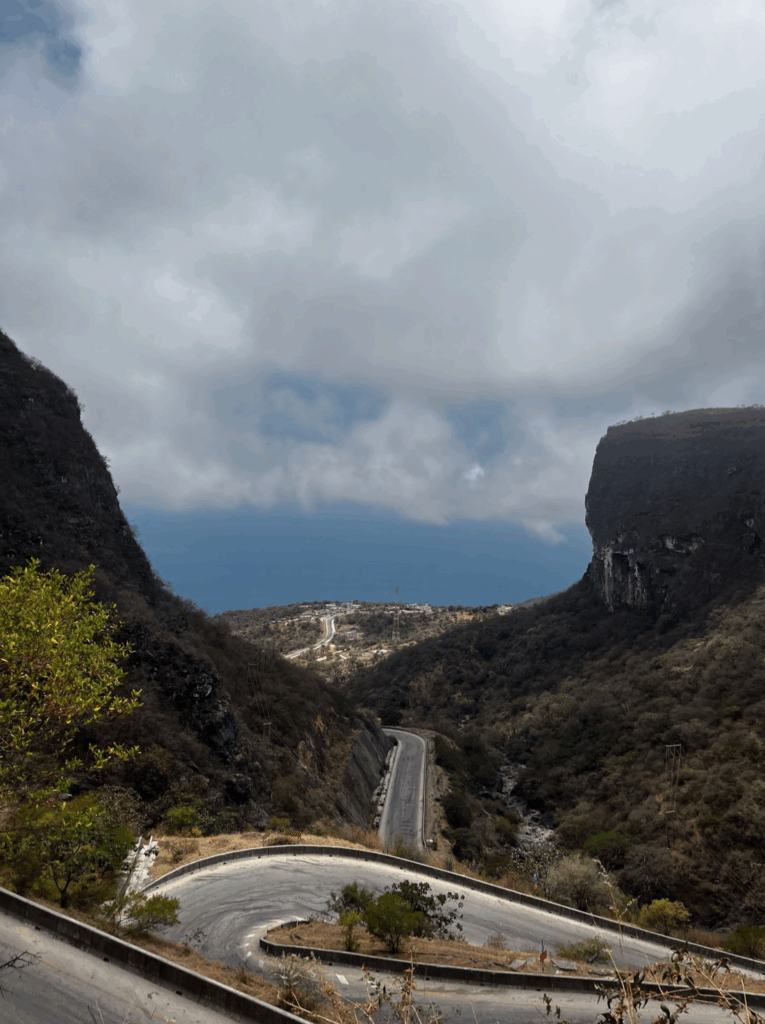
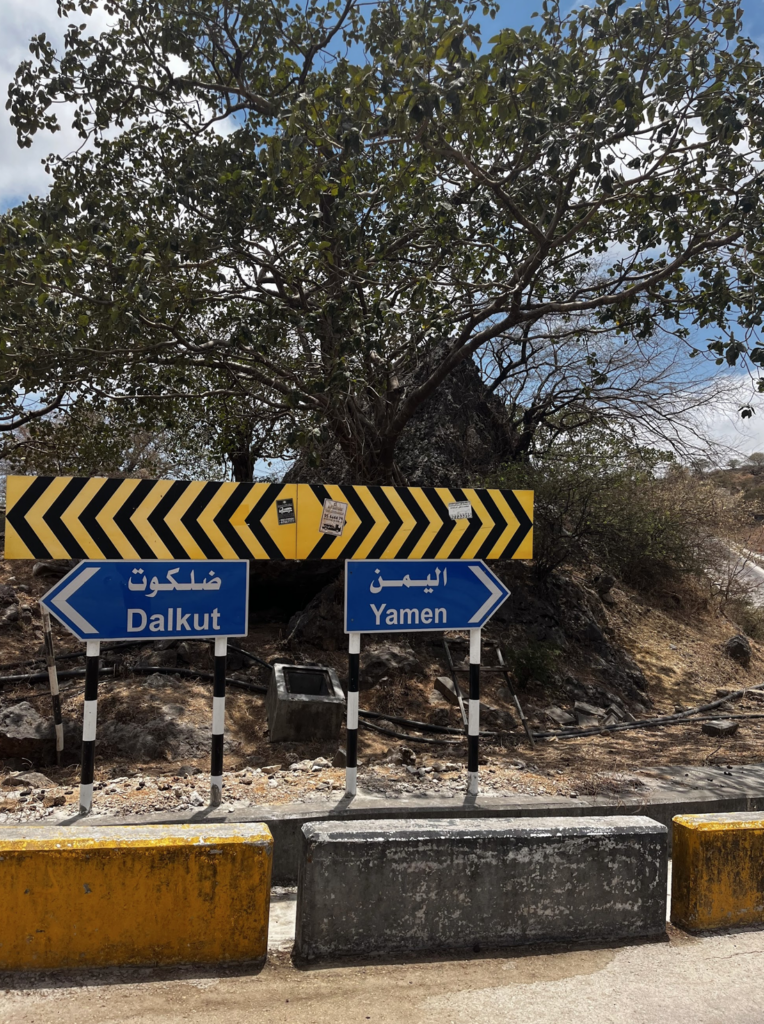
My favorite drive on my first trip to Oman was the road between Salalah and the border of Yemen.
Wild, untouched beaches fill the entire highway between Salalah and Yemen, where thousands of camels roam freely. Dramatic mountains and soaring cliffs back the coastline.
It only takes 2 hours to drive from Salalah to Sarfayt, the town on the border with Yemen. However, I spent nearly the whole day on the road, stopping to enjoy the scenery, take pictures with the camels, and swim in the sea on pristine beaches I had all to myself.
Many of the camels came up directly to my car, curious about me and my oversized Chinese 4WD before continuing to graze on weeds.
On the entire 100 mile (151km) road between Salalah and Yemen, I was the only traveler along what was some of the most dramatic scenery and unspoiled natural beauty I have experienced anywhere in the world.
As I got closer to Yemen, the landscape only increased in both beauty and mystery as the road took dramatic turns into the clouds and along the soaring green cliffs all the way to the sea.
I drove right up to the armed border, marked by an arched Arabian style gate and peered into the heartland of Yemen. Omani police with riffles in hand quickly approached and made me delete every photo I took of the militarized border crossing. I could only imagine the road on the Yemeni side would be just as otherworldly.
Hopefully, the Civil War will end in Yemen in the near future, restoring peace to the lives of the Yemeni people and increasing tourism which could bring some relief to the stressed economy.
4. Watch a Traditional Omani Bull Fight

By far, one of my favorite things I did when visiting Oman was witness the Omani Bull fights in the village of Liwa close to the UAE border. It’s probably the single most off the beaten path experience of my entire travels.
Locals gather around an open field bringing lawn chairs or standing on mounds of dirt to watch 2 bulls battle. Unlike Spanish bullfighting, there are no matadors and no harm is intended for the bulls. It’s a non-lethal tradition and the event coordinators and crowd help break up the bulls when it’s clear one is winning. However, sometimes the bulls break free and charge the crowd, leaving the audience scrambling.
The Omani bull fights are legal but not well publicized. I was the only Westerner in attendance and no women were present. I wore traditional clothing to “blend in” but I still stood out like a sore thumb with my backpack and tripod . Locals were curious about why I was there but were overall friendly and helped me break through the crowd to find good places to spectate.
The bull fights are more common in the Northern regions of Oman, especially Sohar and Barka.
// Everything you need to know about the traditional bull fights in Oman (COMING SOON).
5. Sohar Grand Mosque
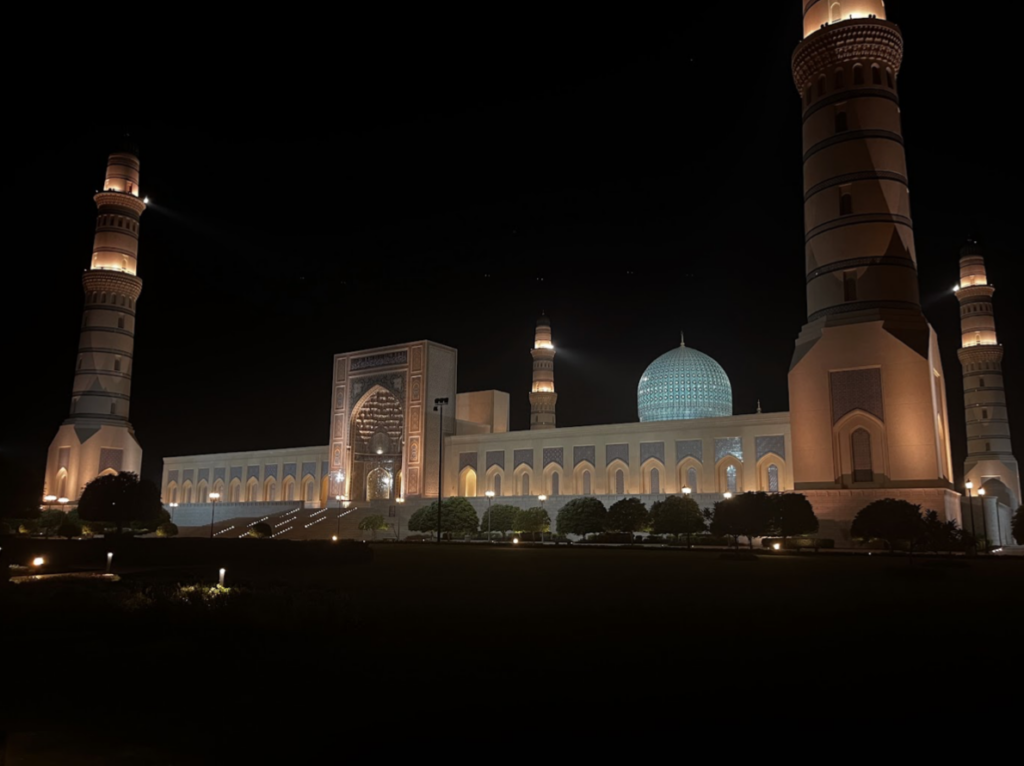
A lesser known gem in Oman is the Sultan Qaboos Grand Mosque in the city of Sohar. The mosque is massive in scale with the grounds being remarkably serene thanks to its palm tree covered walkways and perfectly manicured gardens.
The Sohar Sultan Qaboos Grand Mosque displays the grandeur of modern Islamic architecture while featuring traditional Omani, Iranian, and Mughal designs. Hundreds of turquoise Persian tiles cover the entrance to the mosque courtyard, influenced by the styles found in Iran across the gulf.
I highly recommend visiting at night, where you get to truly experience how peaceful and orderly things are in Oman.
6. Enjoy The sunrise at Jebel Shams – The Grand Canyon of Arabia
Jebel Shams is one of the most unforgettable places I’ve visited in all of the Middle East. Located about 150 miles (240km) outside Muscat, Jebel Shams is the highest mountain in the country and the first place to see the sunrise in Oman. Sitting at 9,872 feet above sea level, Jebel Shams translates from Arabic as the “mountain of the sun”.
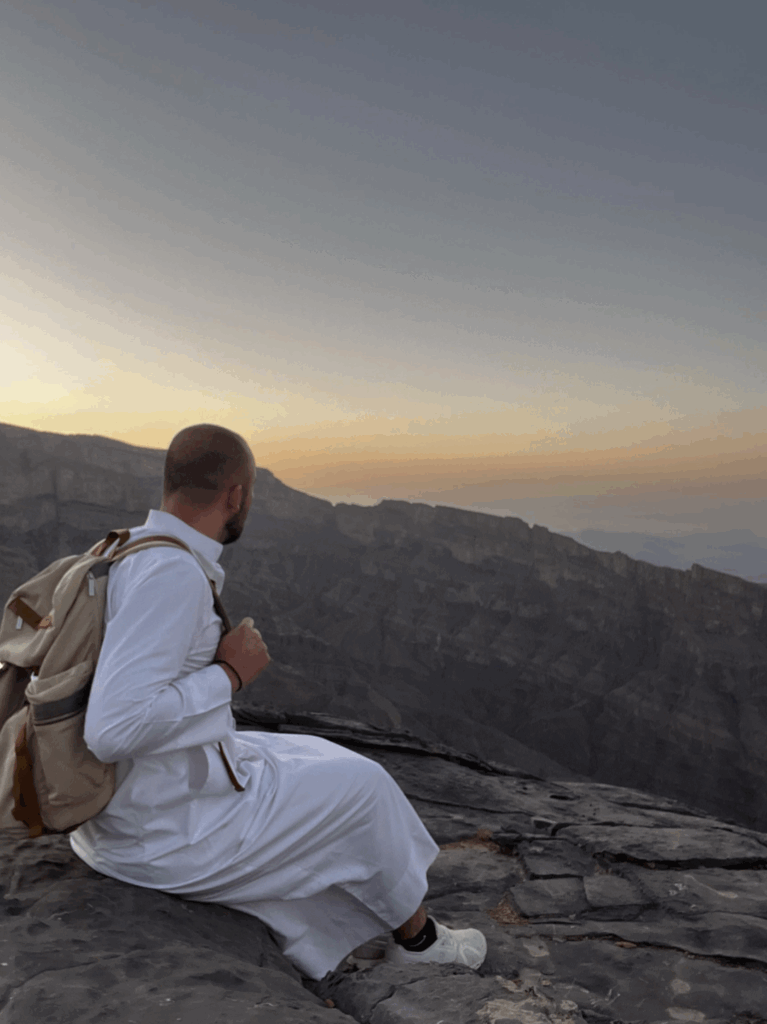
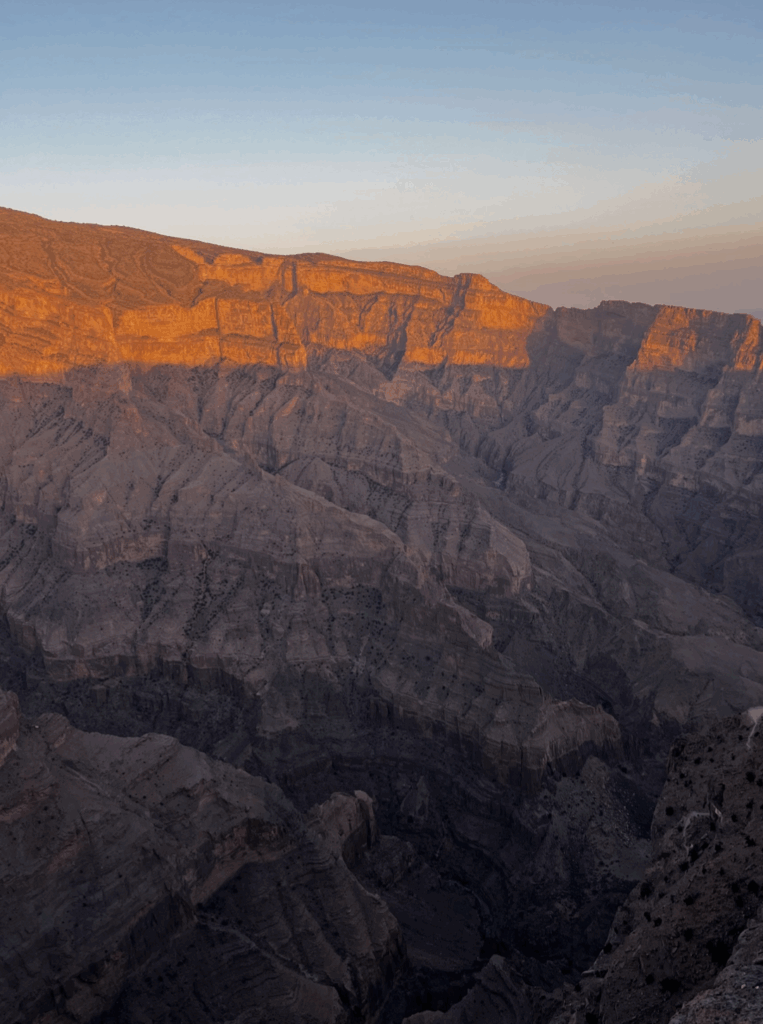
Gazing into the depth of Jebel Shams is both stunning and a little terrifying at the same time. The canyon is a dramatic vertical drop.
I drove up to Jebel Shams and arrived in the early afternoon and stayed the night. This allowed me to watch the sunset and then to wake up in the early hours of the morning to catch the sunrise. It’s the best time to photograph Jebel Shams because of the soft lighting that paints Jebel Shams multiple hues of amber, purple, and orange. One night was enough time to experience the magic of Jebel Shams without feeling rushed.
7. Visit the Mountains of Jebel Akhdar During the Rose Season

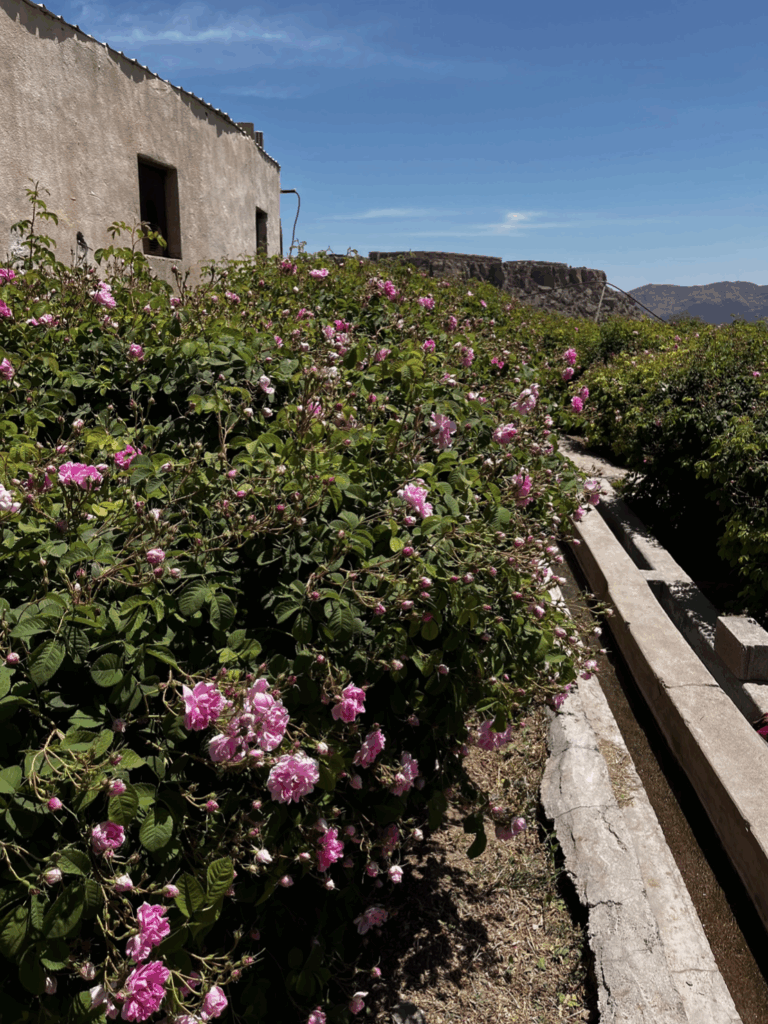
One of the main reasons I chose to visit Oman in April was to see the rose bloom in the Jebel Akhdar mountains. Every spring, thousands of pink and fragrant Damask roses burst into bloom, transforming Oman’s “Green Mountains” into a vast, living rose garden.
I wandered between Jebel Akhdar’s historic mountain villages, following narrow paths and stone stairways that weave through dense rose fields that hug the cliffside. Along the way, I passed by the ancient falaj irrigation systems that have sustained the roses for centuries.
I joined the locals in picking the roses, which are distilled into rosewater. Jebel Akhdar’s rosewater is famous across the region. The rosewater is used both to soothe the skin and to flavor traditional sweets and pastries.
// For more information on the Jebel Akhdar Rose Blooms, see my guide and blog on how to visit Jebel Akhdar and Jebel Shams (COMING SOON).
8. Spend the night in a Former Mountain Village
I stayed the night in Jebel Akhdar at the Suwgra, a former mountain village transformed into a charming bed and breakfast. Built directly into the side of a mountain, the Suwgra is unlike any place I’ve ever stayed. All luggage is transported by zipline to reach the hotel. It was nerve-wracking watching my Louis duffle speeding through the air above the ravine, which plunges hundreds of feet below.
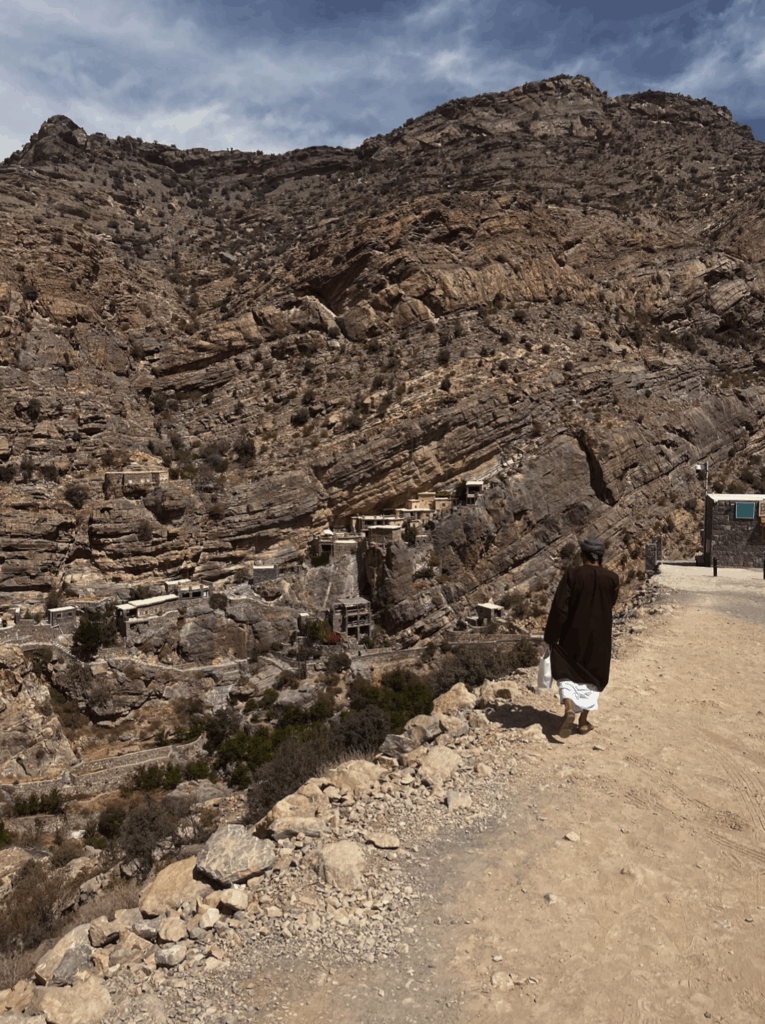
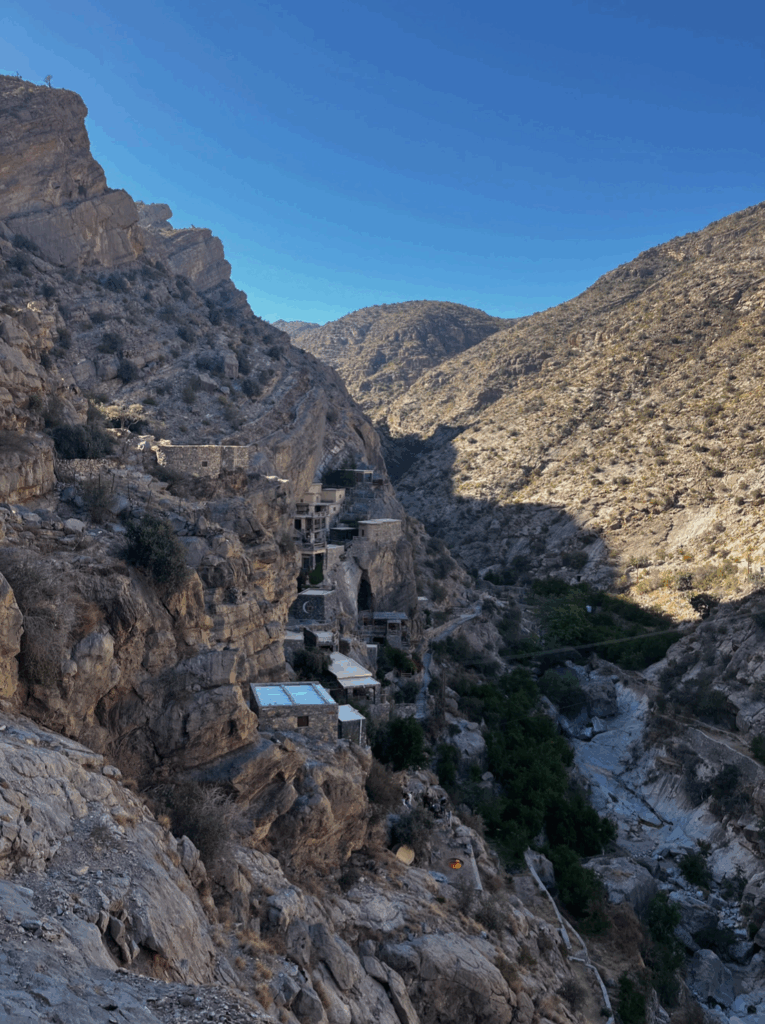
The Suwgra has just 11 rooms and is run by the family who lived in the village until only a few years ago. I highly recommend booking in advance, as the property is almost always fully occupied. When I arrived, I was warmly greeted with a tray of dates and a cup of floral and strong Omani coffee.
The Suwgra’s coffee shop, Anat, feels like a treehouse café and offers stunning views of the surrounding mountains and canyons. I also enjoyed exploring the many hiking trails around the Suwgra which offer stunning vistas of Jebel Akhdar.
9. Immerse Yourself in Omani Food and Culture

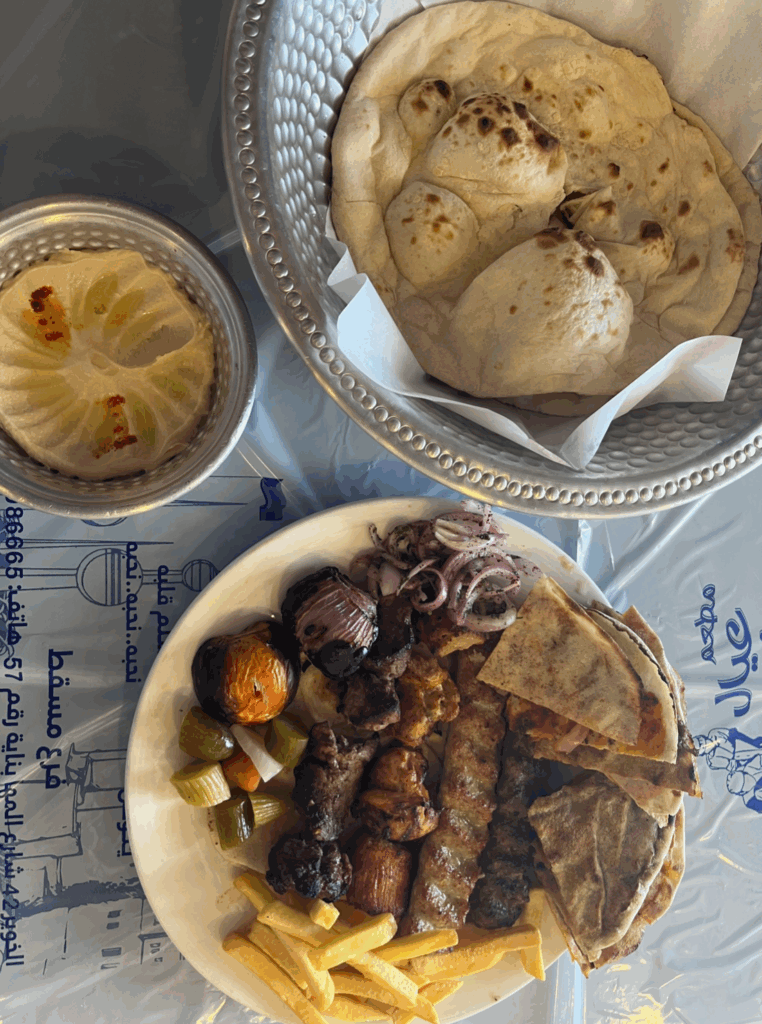
One of the unique things about traveling to Oman is how well-preserved the culture and traditions are compared to other countries in the Arabian Peninsula. While some of the other oil-rich monarchies in the Persian Gulf have lost touch with their identities through modernization and globalization, the opposite is true in Oman. Despite welcoming millions of low paid workers and Western expats, Oman has deeply retained its traditions, cuisine, and overall way of life.
Omani Food is incredible. I tried as many local dishes as possible and it was some of the best food I’ve had traveling in the Middle East. People often eat on the floor and share large metal platters of meat, rice, hummus, and oversized bread. It’s also common to eat with your hands. My favorite thing I tried in Oman was camel skewers!
Whenever I arrived somewhere new in Oman, I was treated as a guest and brought dates and served steaming Omani coffee out of a Dallah. The Dallah is a traditional Arabian coffee pot with a long beak used for serving coffee. I was even served hot Omani coffee out of the Dallah in the business cabin on my flight from Muscat to Salalah on Oman Air.
Traditional Omani Clothing
You will see the majority of locals still wearing traditional Omani clothes everyday. I often wore the dishdasha (the traditional Omani tunic), when in public, as I felt like it helped me blend in more in situations when I was the only “Westerner”. Locals appreciate when travelers wear the traditional Omani dress and see it as a sign of respect. Additionally, men can also wear the Omani skull cap (kumma), the dagger (khanjar) and carry a walking stick embroidered with silver (Assa). Women can wear a modest dress called an abaya. The Hijab is optional but required when visiting mosques. Some female travelers may find it convenient when trying to blend in when visiting local areas.
10. Nizwa Fort and Traditional Souqs
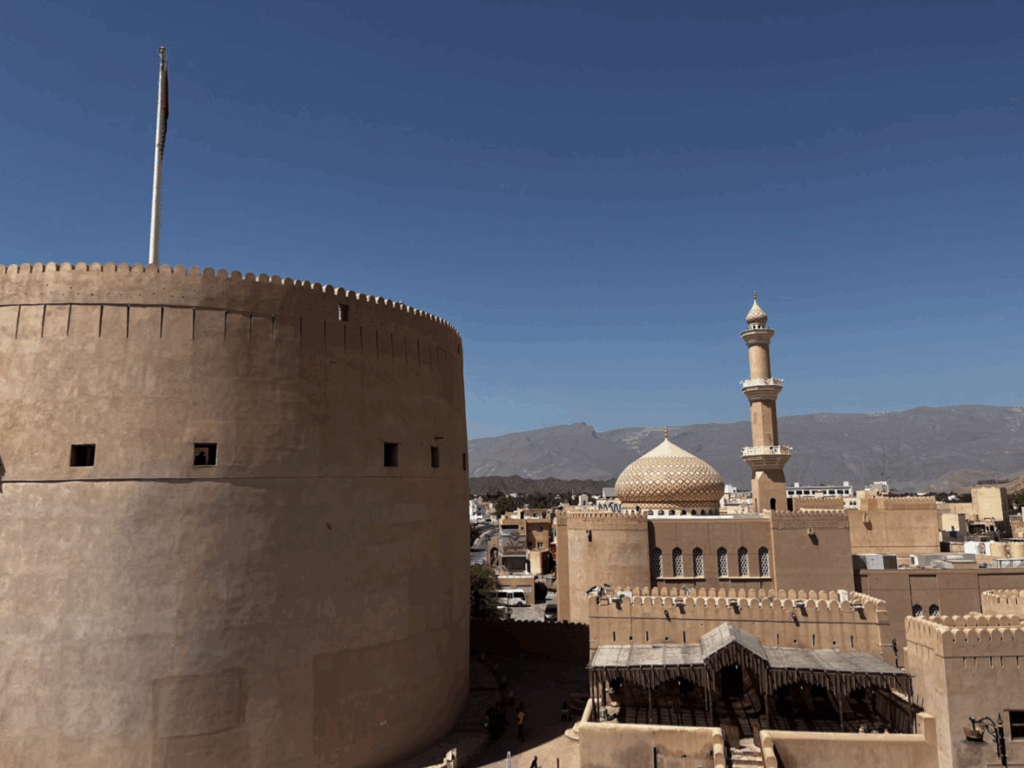
Only an hour and a half away from Muscat is the historic town of Nizwa. The former 6th and 7th century capital of Oman, Nizwa was once the center of culture, commerce, and learning in ancient and medieval Oman. The city’s most famous landmark is the Nizwa Fort. Built in the 17th century, Nizwa Fort is a remarkable example of Omani military architecture and the country’s expertise in building fortresses. This defensive knowledge enabled Oman to stay independent for the majority of its history.
Nizwa also served as a gathering place for religious scholars. These scholars made up the Ibadi sect of Islam. This sect became, and still is the dominant religious sect in Oman. Ibadism is renowned for being a more moderate and tolerant branch of Islam. Scholars would gather and pray at the Nizwa Mosque. Non-Muslims can still visit the mosque in the morning. You can also shop for affordable Omani clothes in the stores beneath the mosque.
Another place you must visit in the city is the Nizwa Souq. This was by far my favorite bazaar in the entire country. Many traditional shops sell local antiques and products created in Oman, including bakhoor and frankincense.
// TIP: Visit Nizwa Souq on Friday to witness the goat market, where thousands of goats, camels, and cows are sold.
11. Stay at an Omani Luxury Resort
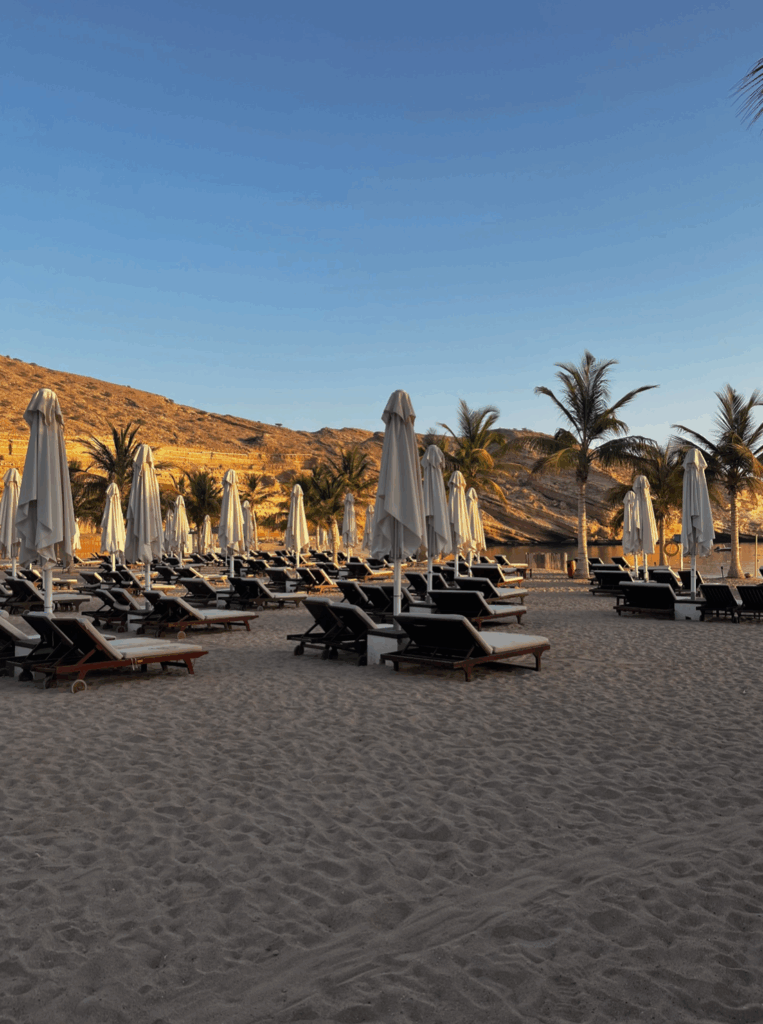
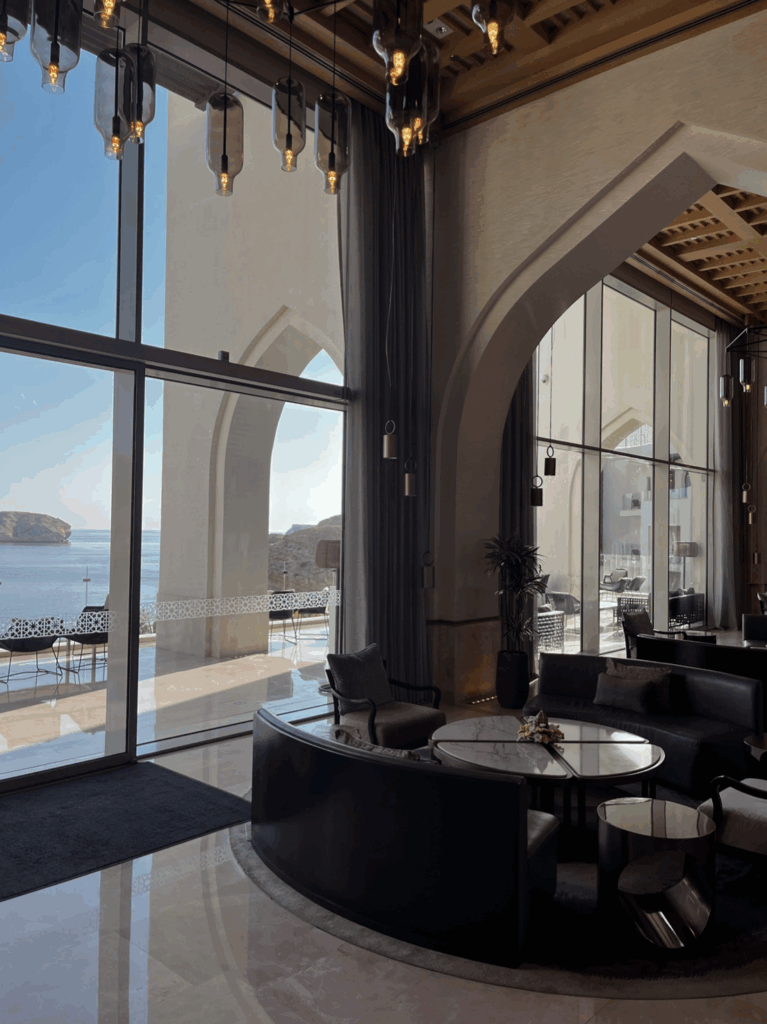
When traveling to Oman it’s definitely worth splurging and staying at one of the country’s pristine luxury resorts. Oman is home to some of the most luxurious and scenic 5-star hotels in the entire Middle East.
I stayed at Jumeirah Muscat Bay just 25 minutes outside the city center of Muscat. The resort sits nestled in a secluded lagoon and private beach and is surrounded by unique rock formations and date trees. Wild sparrows woke me up each morning as the sun began to rise and drench the bay in golden light. The resort also has multiple restaurants and 24/7 room service.
Other luxury resorts in Muscat include The Chedi Muscat and the St Regis Al Mouj. Outside of Muscat, Jebel Akhdar houses the world famous Alila and Antara resorts that have cliff views overlooking the mountains and lavish suites.
12. Explore the Capital – Muscat
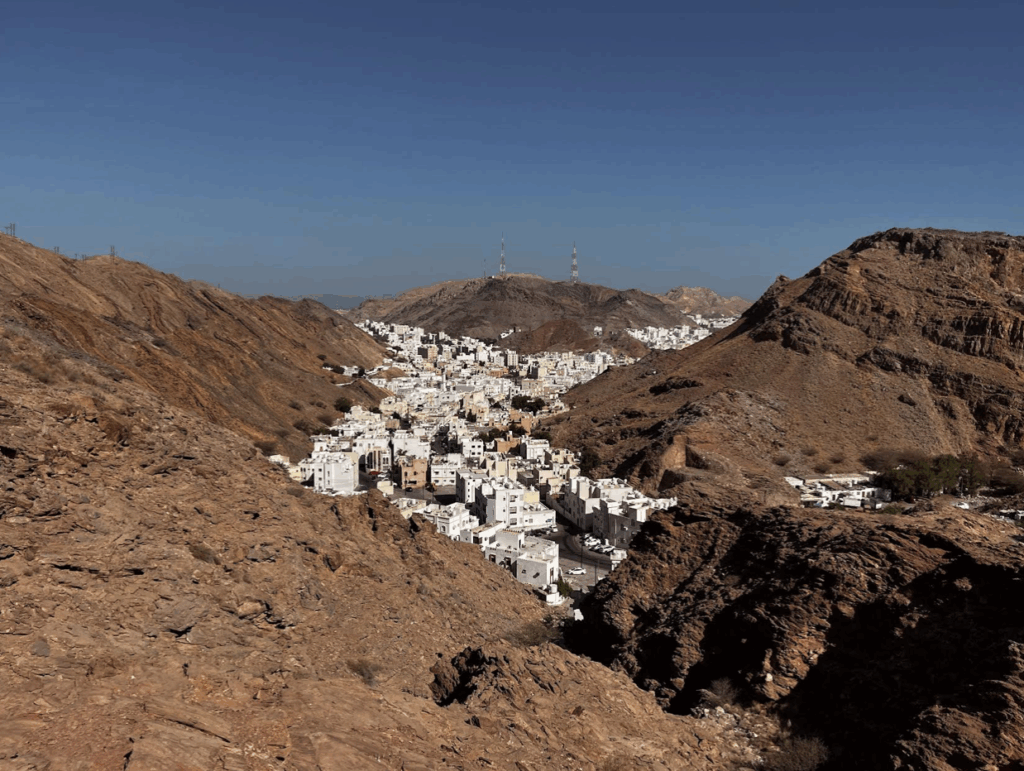
Oman’s capital, Muscat, is a fascinating and vibrant city. Unlike neighboring regional cities like Dubai, Abu Dhabi, and Doha Qatar, Muscat has retained its authenticity and character. In fact, no skyscrapers are allowed and buildings cannot exceed five stories.
Expansive boulevards lined with date trees and lush gardens connect the otherwise sprawling capital. The city’s neighborhoods are spread out and limited public transportation connects them. Because of this, I definetly recommend renting a car when exploring Muscat. The city has a unique energy and it quickly became one of my favorites in the Middle East.
// Muscat Master Guide – Everything you need to know before visiting Oman’s super chill capital city (COMING SOON)
13. Enjoy Omans Many Wadis
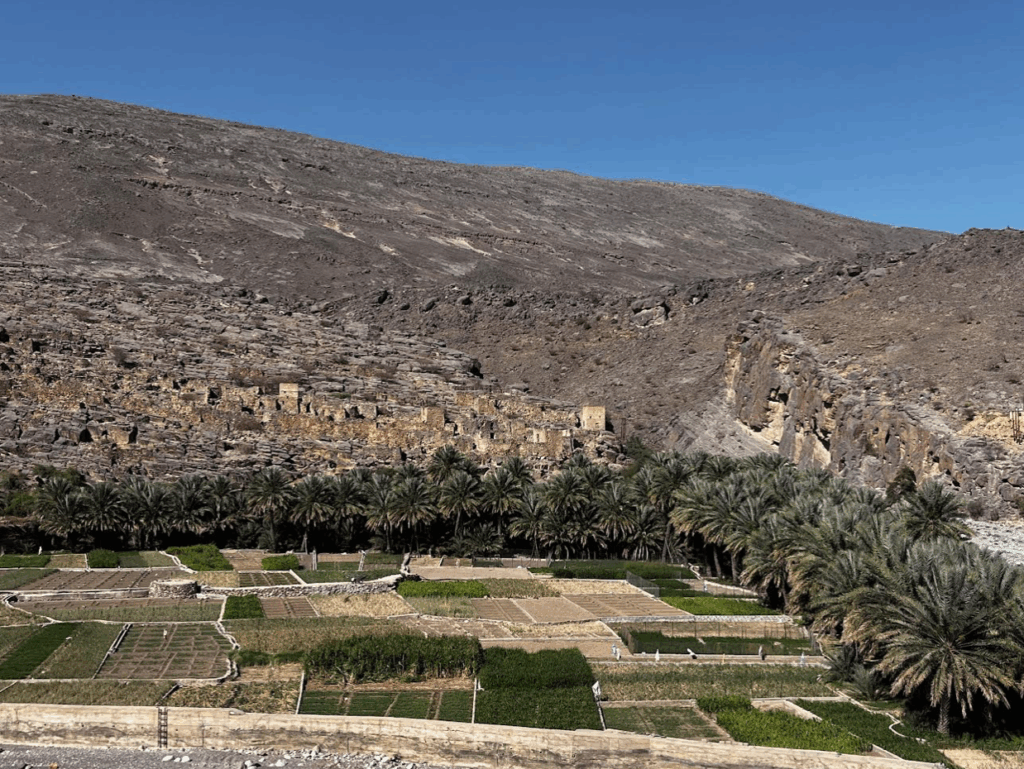
Throughout the countryside of Oman, past long stretches of arid hills and desert landscapes, I came across unexpected lush oases. These lush desert mirages, filled with palm trees and seasonal rivers are called wadis.
Although Oman has no permanent rivers (none of Arabia does), the country has over a thousand wadis! Tucked in the dry terrain are green paradises, often shaded under a canopy of palm trees. Some of the wadis have water pools, freshwater streams, and waterfalls.
// Many Omani’s enjoy camping in the Wadis. You can join some of the locals by searching through the postings on Couchsurfing Oman.
14. Ride a Camel
When I was planning my trip to Oman, one of the first things I wanted to do was ride a camel. Getting to ride a camel was a dream of mine ever since I was a child. I was both incredibly scared and excited when the camel stood up, raising me high into the air as he carried me across the beach.
I got to ride a camel in Salalah. Here is my tour I booked my camel ride through.


15. Visit the Tomb of One of the Bibles Oldest prophets
25 minutes North of Salalah, tucked in the hills of the Dhofar region, is the tomb of one of Judaism, Christianity, and Islam’s holiest prophets. The tomb of the Prophet Job is one of the most surprising places I visited in Oman.
When I visited, I had the shrine completely to myself. It felt surreal to be at the grave of one of the oldest prophets in the entire Bible. The story of Prophet Job is an ancient one, predating Moses and King David by a thousand years. Scholars of all three faiths largely agree that Job was from the Dhofar region of Oman.
// For more of my blogs and guides on visiting Oman and the Middle East, follow along!

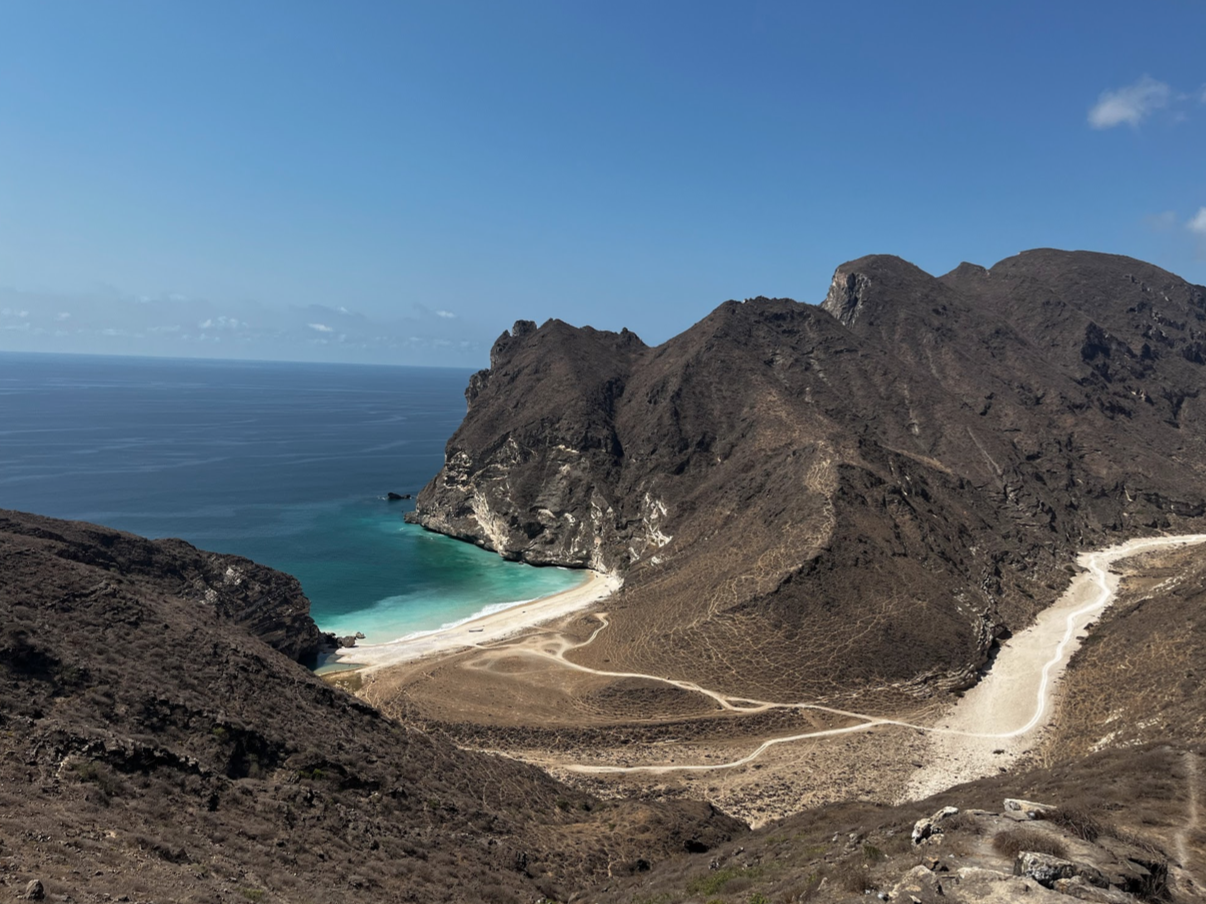

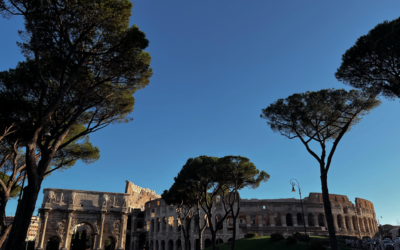
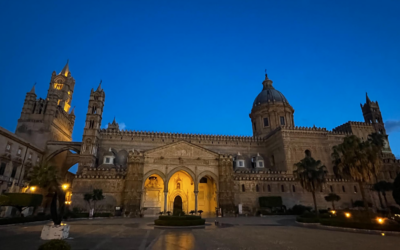
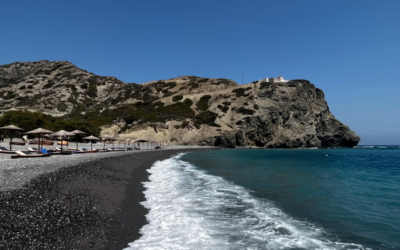




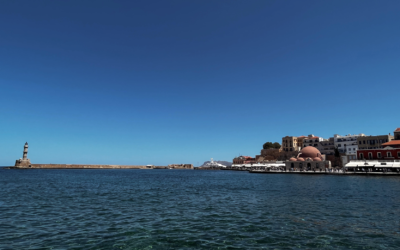
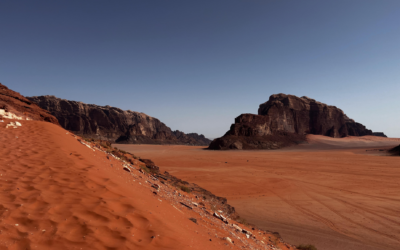
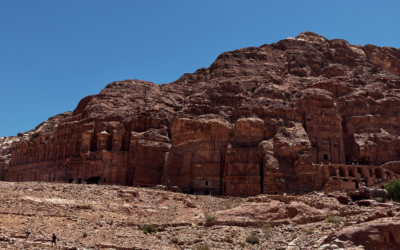
0 Comments